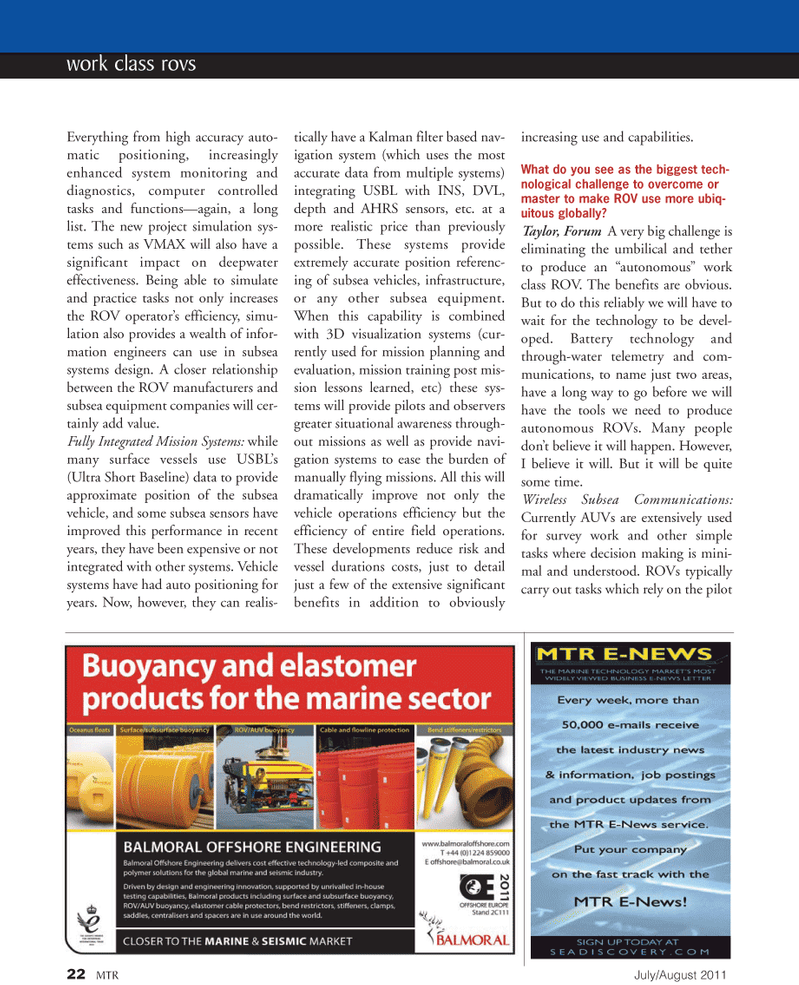
Page 22: of Marine Technology Magazine (July 2011)
MTR100 Edition
Read this page in Pdf, Flash or Html5 edition of July 2011 Marine Technology Magazine
Everything from high accuracy auto- matic positioning, increasingly enhanced system monitoring anddiagnostics, computer controlled tasks and functions?again, a longlist. The new project simulation sys- tems such as VMAX will also have a significant impact on deepwater effectiveness. Being able to simulate and practice tasks not only increases the ROV operators efficiency, simu- lation also provides a wealth of infor- mation engineers can use in subseasystems design. A closer relationship between the ROV manufacturers and subsea equipment companies will cer-tainly add value. Fully Integrated Mission Systems: whilemany surface vessels use USBLs (Ultra Short Baseline) data to provide approximate position of the subsea vehicle, and some subsea sensors have improved this performance in recent years, they have been expensive or not integrated with other systems. Vehicle systems have had auto positioning for years. Now, however, they can realis- tically have a Kalman filter based nav- igation system (which uses the mostaccurate data from multiple systems) integrating USBL with INS, DVL, depth and AHRS sensors, etc. at amore realistic price than previously possible. These systems provide extremely accurate position referenc- ing of subsea vehicles, infrastructure, or any other subsea equipment.When this capability is combinedwith 3D visualization systems (cur-rently used for mission planning and evaluation, mission training post mis- sion lessons learned, etc) these sys-tems will provide pilots and observers greater situational awareness through- out missions as well as provide navi- gation systems to ease the burden of manually flying missions. All this willdramatically improve not only the vehicle operations efficiency but the efficiency of entire field operations. These developments reduce risk and vessel durations costs, just to detail just a few of the extensive significant benefits in addition to obviously increasing use and capabilities. What do you see as the biggest tech-nological challenge to overcome or master to make ROV use more ubiq- uitous globally?Taylor, Forum A very big challenge is eliminating the umbilical and tetherto produce an autonomous? work class ROV. The benefits are obvious. But to do this reliably we will have to wait for the technology to be devel- oped. Battery technology and through-water telemetry and com- munications, to name just two areas, have a long way to go before we will have the tools we need to produce autonomous ROVs. Many people dont believe it will happen. However, I believe it will. But it will be quite some time. Wireless Subsea Communications: Currently AUVs are extensively used for survey work and other simple tasks where decision making is mini- mal and understood. ROVs typically carry out tasks which rely on the pilot work class rovs 22MTRJuly/August2011

 21
21

 23
23
